Indiana's Statehouse isn't the state's first. Here's what happened to the others.
The extravagant limestone building sitting at the corner of Washington Street and Capitol Avenue is arguably the most important building in the state: it's where Indiana lawmakers have passed new laws for 134 years.
But it's certainly not Indiana's first statehouse. It's the fourth statehouse — or fifth depending on what counts as a "statehouse" — since Indiana became a state in 1816, and the second at its current location. The previous one started crumbling within decades of being built.
Here's a look back at the history of Indiana's state capitol building.
The first statehouse
The first statehouse cost only $1,500 to build and was located 130 miles south in Corydon, near Louisville. It was at the site of that 40-foot-square building that the state's constitution was written, as were the proposals to apply for statehood, said Susan Sutton, director of access and preservation at the Indiana Historical Society.
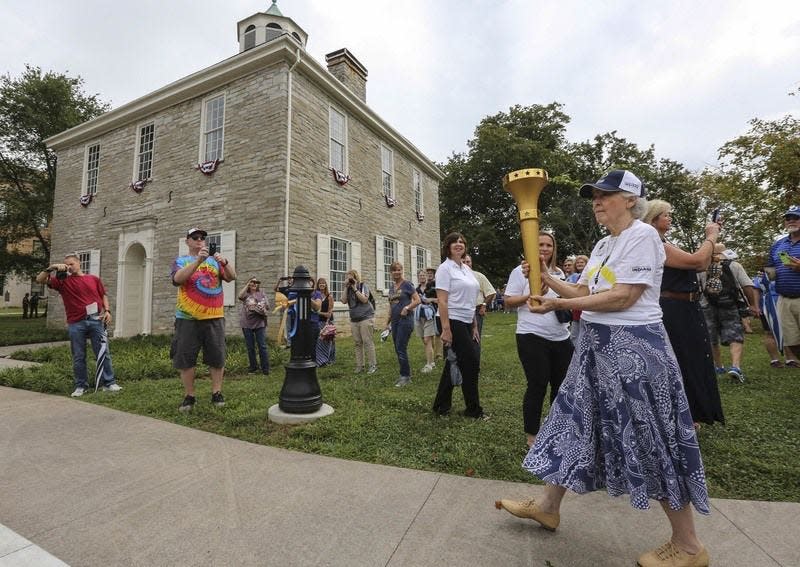
During that first session, 29 representatives, 10 senators and the lieutenant governor met in the building — a bit smaller than today's 150-person General Assembly.
The state only used the building from 1816 until the end of 1824, when the state seat was moved to Indianapolis. State leaders chose the city because of both it's central location and because they wrongly thought the White River would be a useful transportation mechanism.
"They truly thought they would be able to bring large boats up that river, back down," Sutton said. "That never happened. A lot of boats ran aground."
Around Indiana: 20 drive-in theaters in Indiana where you can see new and retro movies
The second Statehouse
The trip relocating the statehouse from Corydon to Indianapolis took roughly a month, Sutton said, as those moving the furniture and treasury had to "hack" their way through the trees that covered their path back then.
"Just picturing in your mind all those wagons lined up and moving," Sutton said. "They had to cut down a bunch of trees, but there's also the mud factor."
The wagons likely would sink in the mud as Indiana made the move in the winter.
When state officials arrived in Indianapolis, they didn't yet have a permanent home. So from 1825 until 1835, state government was housed in the Marion County Courthouse, then located at Delaware and Washington Streets, Sutton said.
Justin Clark, digital initiatives director for the Indiana Historical Bureau, a division of the Indiana State Library, said the city of Indianapolis itself wasn't what it was today. Back then it was much more swamp-like. (Think hot, humid and lots of mosquitos).
"It was a pretty ramshackle place," Clark said. "There were just very rudimentary lodging and food places."
The third statehouse
The third statehouse, which opened in 1835 on the same site the current Statehouse sits, was based on the Ancient Greek Parthenon, but with a dome in the middle of the roof. The $60,000 building was only two stories, and was roughly 200 by 100 square feet.
Historians called it "gorgeous" and "neat."
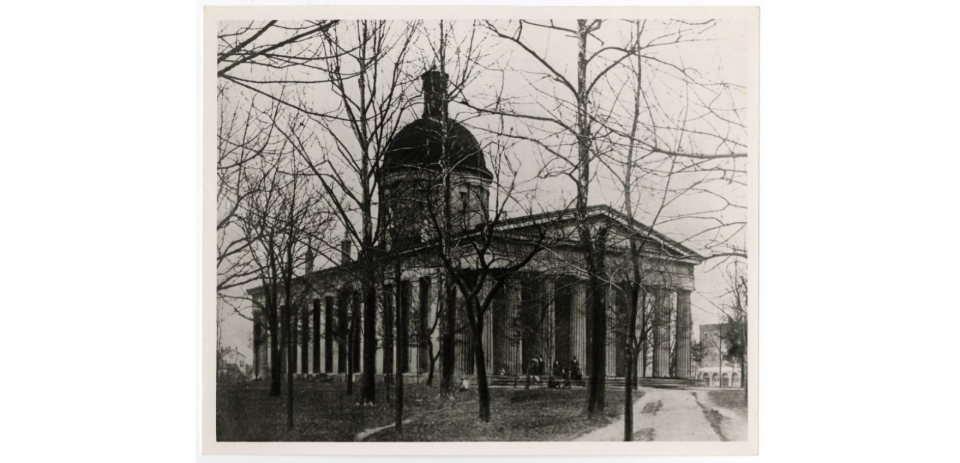
“The thing that was great about the building was that it was built ahead of schedule, it was built under budget," Clark said. "But it being built really quickly and with less money, lead to problems.”
The building had structural problems, and had issues with leaks and fires. Within decades the building started to crumble, in part due to too soft of stone, Sutton said. By the late 1860s, the ceiling in one of the chambers had collapsed.
"It looked disreputable," Sutton said. "It probably got to be a horrible place to work."
The building was finally demolished in 1877, and while the state prepared to build a new statehouse, lawmakers relocated to another building — technically the fourth statehouse — temporarily.
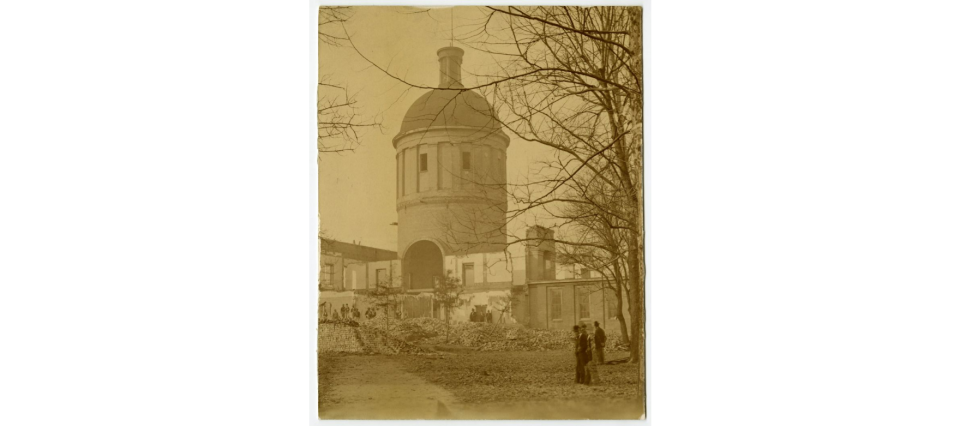
The current statehouse
State leaders appeared to have learned their lesson from the failures of the third statehouse when it came time to rebuild.
"They were maybe more deliberative in their planning than they had been before," Sutton said. "(In the request for proposals) they also said that while the building should be attractive, it was more important for it to be functional."
More than 20 architects applied to design the new capitol building, according to The Statehouse Tour Office's website. The Board of Statehouse Commissioners chose Indianapolis architect Edwin May to design the building in 1878 with the strict requirement that it not exceed $2 million.
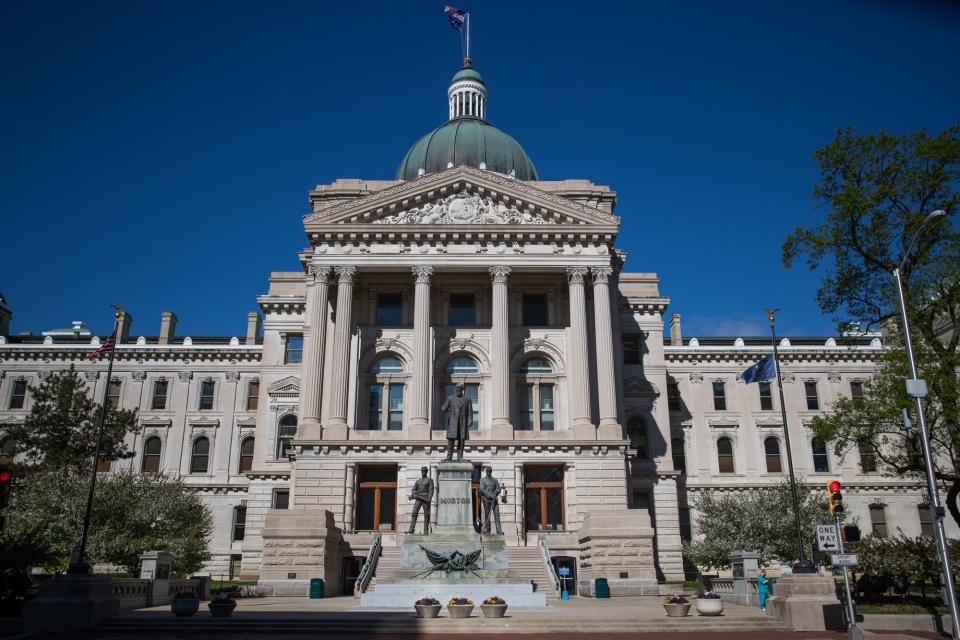
After May died in 1880, his chief draftsman, architect Adolph Scherrer, took over the project. Made with Indiana limestone, the exterior primarily reflected the Italian Renaissance Revival style.
The building was completed in 1888, but lawmakers held their first legislative session there in 1887 as construction was wrapping up, just under budget. At the time, Indianapolis' electric plant didn't supply enough electricity to the building, so light fixtures were lit with natural gas.
Of course, just because the building was more structurally sound, didn't mean it wouldn't need love later on.
Over the next century, the building underwent wear and tear as workers treated it more like an office building, and less like a historical building of significance. Chandeliers were replaced with florescent lights, cubicles were added to open areas, leaving marks in some places. The glass dome hanging above the rotunda was "absolutely disgusting," Clark said.
"Really basically it was so dirty from nearly 100 years of never really being upkept that it was basically opaque," Clark said.
You may enjoy: The surprising Indiana origins of the Pentagon, Empire State Building and more landmarks
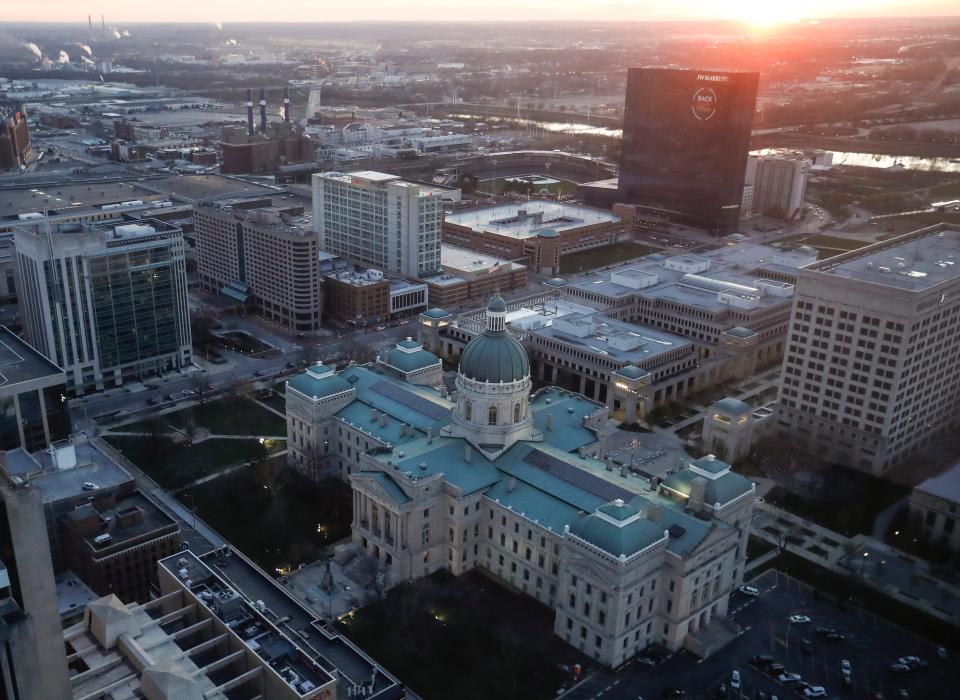
The building was extensively renovated in 1988, for its 100 year anniversary, including fixing the before mentioned problems and repainting the interior. One electrician helping with the renovations back then made a well-taken point about the longevity of the current Statehouse.
"The laws may change, " Sam Sample, a Grenwood resident, said in an Indianapolis Star story in 1988, "but our conduits should be around for a long time — maybe another 100 years."
Call IndyStar reporter Kaitlin Lange at 317-432-9270 or email her at kaitlin.lange@indystar.com. Follow her on Twitter: @kaitlin_lange.
This article originally appeared on Indianapolis Star: Indiana's Statehouse isn't the state's first.

